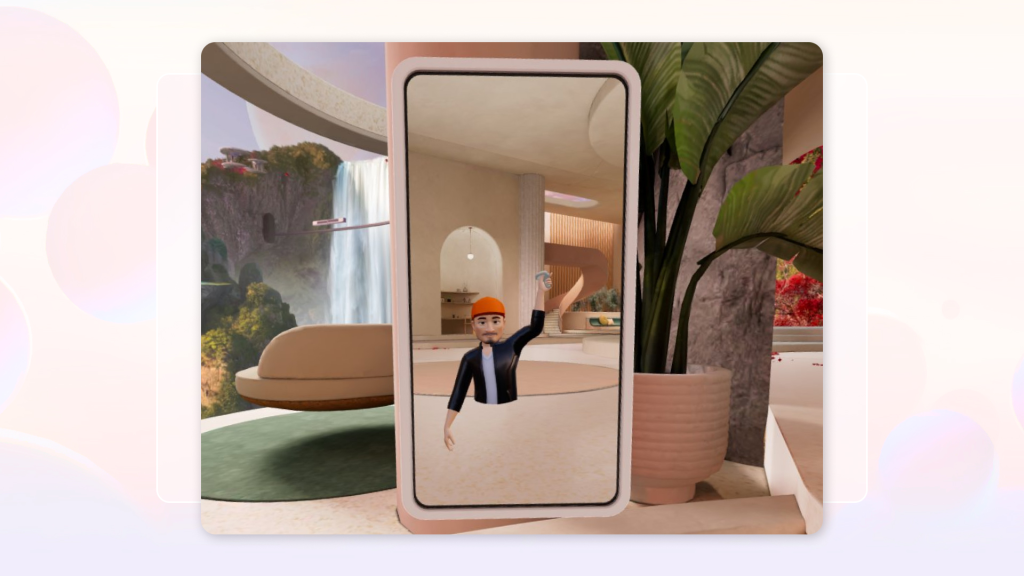
Since Mark Zuckerberg showed off an idea of what the metaverse should look like more than a year ago, many have wondered just how the future of work would change.
Would you be donning your dorky virtual reality (VR) headsets to meet colleagues virtually or train for a new task remotely without being on-site?
What would our virtual selves, or avatars, look like? Well, hopefully not like the blocky 90s-looking graphics that the Meta head honcho served up during a much-panned demo last year.
Since then, Meta has taken a hit financially with its costly metaverse adventure and has said it is focusing on a new era of efficiency.
Many things just weren’t well thought out. Think of those VR headsets, for starters. Who would want to wear them for hours in a workday, and for such ugly graphics that are far from immersive?
In a study carried out last year in Germany, where participants donned VR headsets for work for hours, some even reported feeling sick afterwards. If you’re sick of Zoom, wait ’til you try the metaverse. Yikes.
That’s not to mention security. Not just the added security that’s needed to guard the metaverse from intruders but the act of logging in.
Do you pull up your headset to check your phone for the authenticator app to log in with your second factor authentication? Yes, pretty clumsy.
These teething issues, of course, don’t mean the metaverse is doomed as a concept for the future of work. Like other groundbreaking technologies, it might just need some time to evolve.
Think about remote working and video calls. It took a pandemic for businesses to start really using that technology, even though it has been there for years.
Now, despite some outdated thinking that people have to be stuck at an office table to be productive, there’s no turning back from remote working.
This is the entry point for a metaverse that we might actually want to work in. Start by imagining the benefits of remote working and video calls and consider a more rewarding experience.
For starters, those VR headsets will have to massively improve in terms of comfort and usability, or employees could start suing companies for workplace cruelty.
What VR actually tries so hard to achieve actually is presence. That is, the idea that a person is physically in a meeting when they are Zooming in from thousands of miles away over the Net.
Can this be done without VR headsets? Well, think about a realistic 3D game world that you already immerse yourself in today, mostly without VR headsets.
Just last week, game engine developer Unreal came up with an AI-based software app that makes use of an iPhone to capture a human face and turn it into a photorealistic 3D model that looks scarily like a real human face.
What this MetaHuman Animator offers is a low entry point for anyone who wants to create a moving, talking avatar of himself or herself with an iPhone video.
It’s still pretty much a demo now and it’s a tool aimed at developers to turn a recorded video into an animated character for a game or virtual world.
The next leap is for a developer to take this Unreal engine and make the technology work in real time. This way, when you speak in a live metaverse meeting, the software can capture your facial movements and animate it instantly on your avatar in the virtual world.
This will take a lot of computing power, but that’s an issue that tends to be solved over time. With a live avatar in a virtual meeting, everyone can appear “real” next to each other. Presence, in other words.
Photorealistic avatars certainly are an interesting way forward when it comes to the metaverse.
For something to be immersive, it is not just important to envelop our field of vision with goggles but also have believable characters or avatars in this virtual world.
Don’t forget, we don’t always want to be exactly the same in the virtual world as we are in the real world. Need a toilet break? What about keeping your avatar at the virtual table while you head to the washroom?
Okay, don’t keep the camera or microphone on, for obvious reasons, but you can still keep up with the meeting with earphones while your avatar sits quietly in the virtual world.
Don’t forget that not everyone wants a virtually immersive world that a metaverse promises. A lot of work still has to be done on a boring 2D screen, sorry to disappoint, so a balance has to be struck.
During the pandemic, Zoom calls kept people connected. Co-workers continued to get things done, families were united on a screen and friends had Happy Hour gatherings in front of a monitor.
These were temporary measures. Now, if we want to people to keep being connected virtually and for longer, it’s instructive to look at the one virtual world that has captivated the most users, who come back and interact every day. Yes, an online game world.
Zuckerberg’s costly endeavour in the past year or so has tried to reinvent the wheel, but ended up with something that looked more like the Sims from the 1990s.
It’s time that these metaverse creators and companies started learning from game developers and understood what makes people stay in a virtual world.
First, you need to feel the “presence” of others you are interacting with, with the help of realistic graphics. Then, there has to be a purpose – what exactly are you doing in the virtual world?
Is this something that can be accomplished over a Zoom call in the flat 2D world? If so, why not just call each other?
A metaverse interaction has to so deeply connect people in ways they cannot with a video call today. In other words, there experience has to be meaningful. That’s the big challenge now.
















